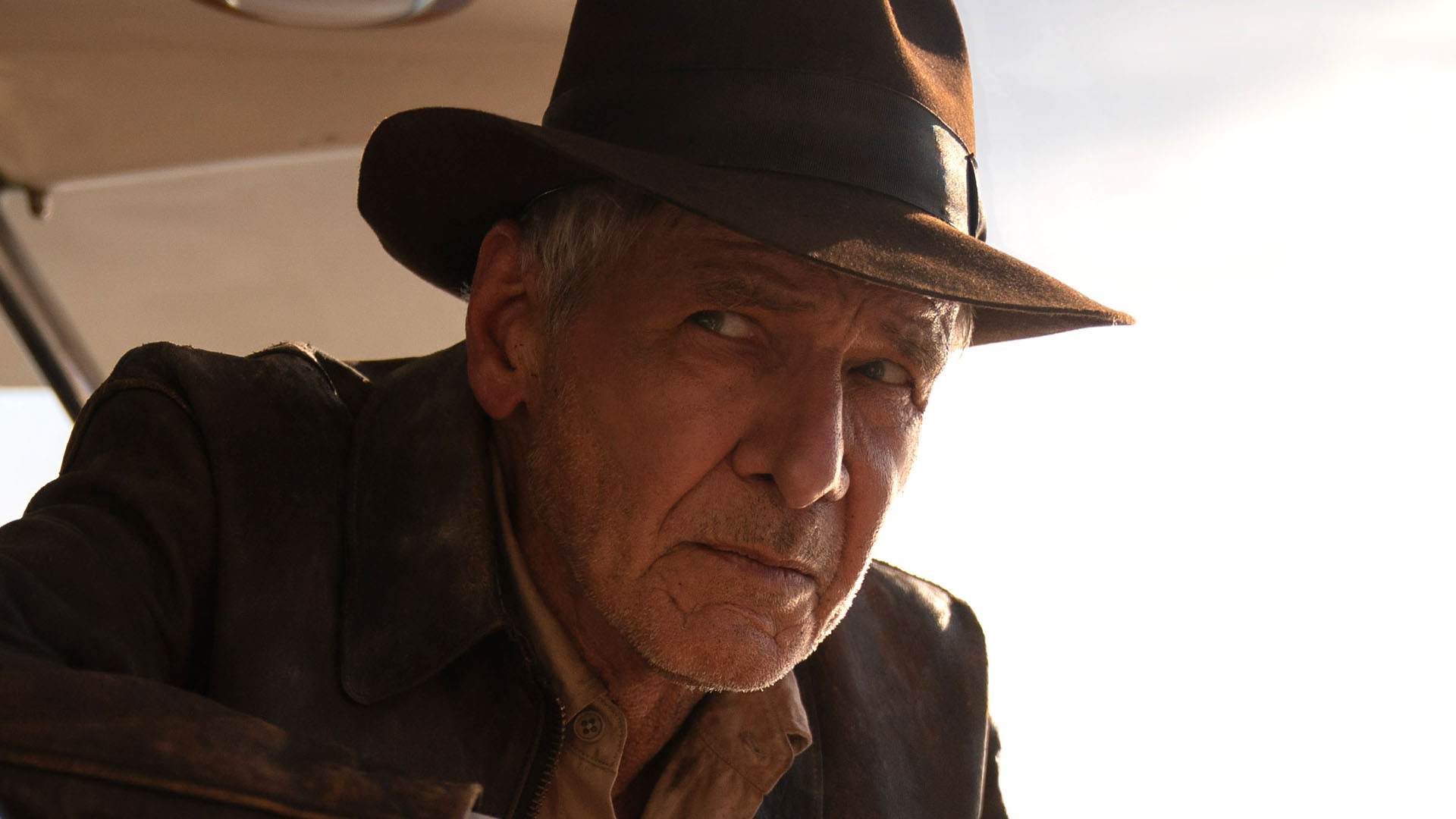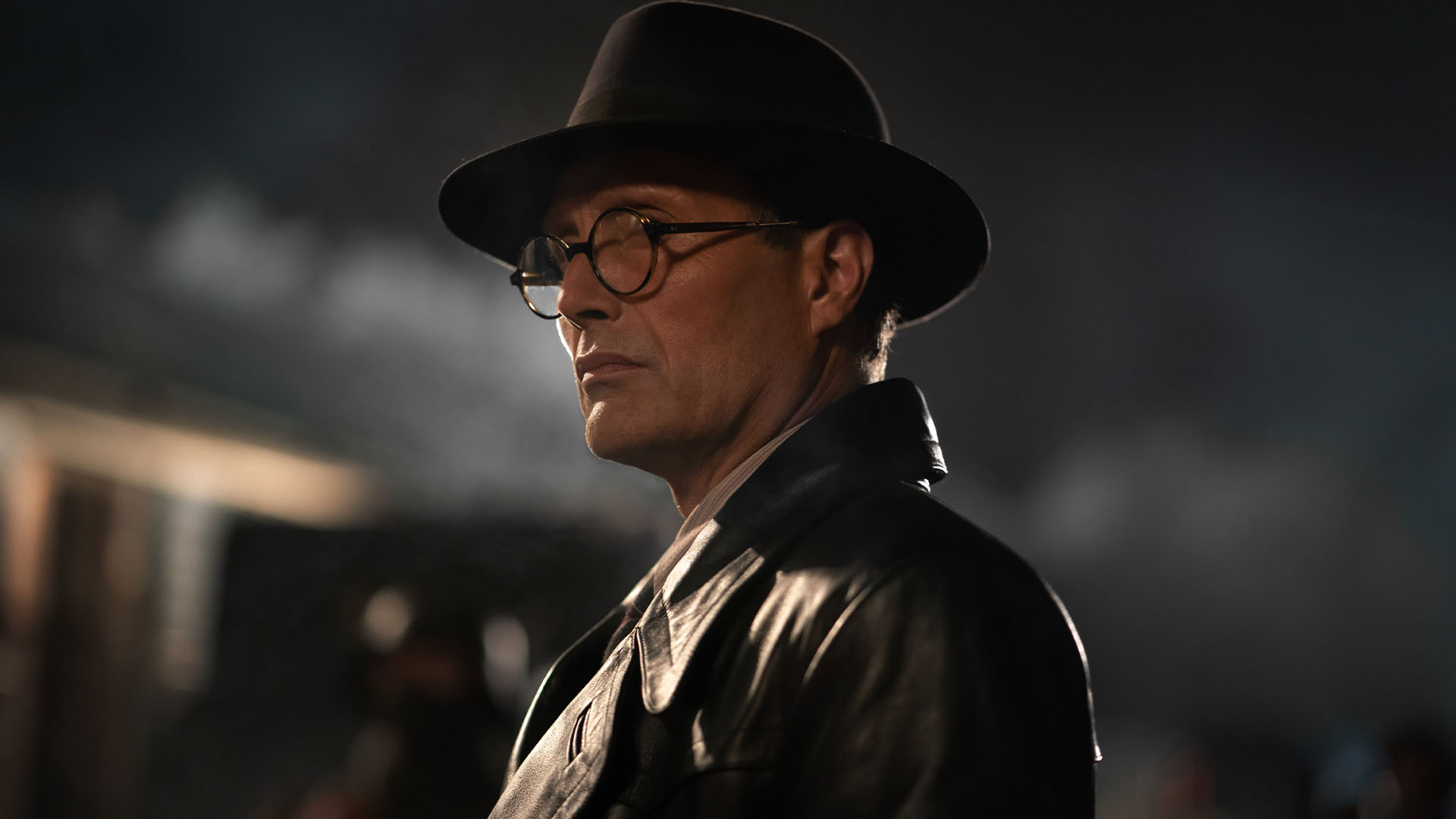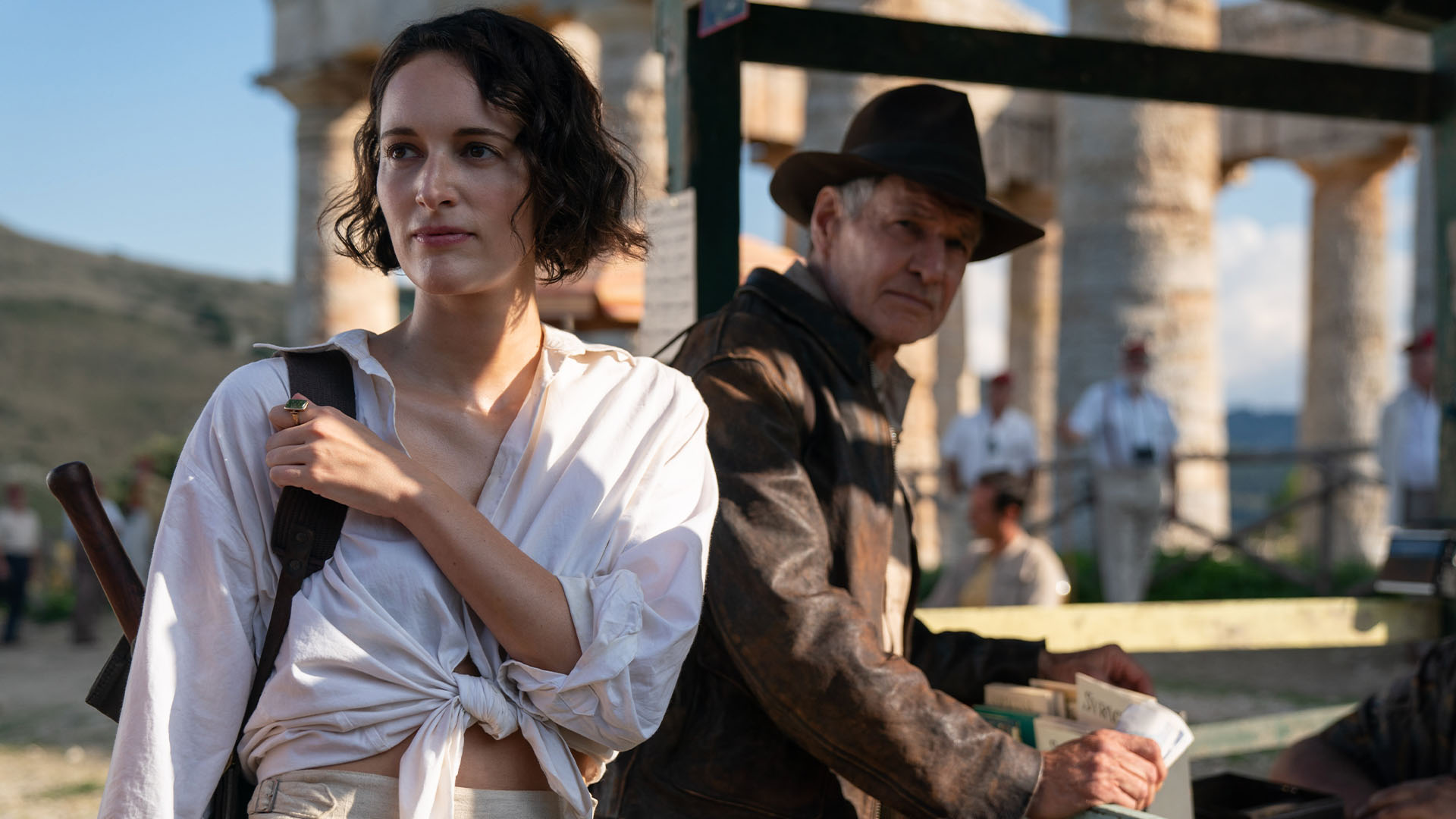Harrison Ford is tremendous fun in Dial of Destiny, but Spielberg’s absence is felt

Harrison Ford returns as the cinema icon in Indiana Jones and the Dial of Destiny, this time with James Mangold behind the camera. Reviewing from Cannes back in May, Rory Doherty found enjoyment in Ford’s final Indy outing – but it lumbers more than any other film in the series.
Indiana Jones and the Dial of Destiny
Fifteen years after the much maligned Kingdom of the Crystal Skull, the fedora-clad adventurer known as Indiana Jones (Junior to his father) has returned to save the free world from fascists, people who need to be punched in the face, and mystical wonders far beyond the comprehension of the modern man. Why? The answer should probably be a resounding “Why not!”—the original trilogy had all of those elements in spades and they’re some of the best spectacle of their era. This latest adventure’s existence is a little more cynically motivated: since Crystal Skull, Lucasfilm’s assets have been bought by Disney, and only now is the House of Mouse getting around to staging an adventure that they would see the sole profits from.
Like Scream, Halloween, or other recent franchise revivals, Indiana Jones and the Dial of Destiny was not helmed by the filmmaker who ushered the character into the world—Spielberg has bowed out and Logan director James Mangold has taken over. But Dial of Destiny has something those other legacy sequels did not—Harrison Ford, and he’s not going to hang up the hat on anyone’s terms but his own. Ford is tremendous fun in the part, keen to give as much gravitas as an Indiana Jones will structurally allow.
Mangold is adept at flashy, pulpy stories with a good bit of grit, not just in his Wolverine swansong, but in Ford v Ferrari and his 3:10 to Yuma remake too. But alas, Spielberg he is not: despite plenty of cartoon physics and zippy, energetic camerawork, Dial of Destiny lumbers more than any other film in the series. A game cast, a few novel plot ideas, and several bouncing action sequences are hung out to dry in a story that feels overwritten and underwritten at the same time. When the credits roll and you see four credited writers, you’re not supposed to think, “That actually makes sense.”
Indy is a nobody professor in New York City on the eve of the moon landing, with a class of sleepy students who are a far cry from the doting, love-eyed co-eds we saw in the original trilogy. He soon comes across Helena Shaw (Phoebe Waller-Bridge), the daughter of a colleague Basil (Toby Jones) who Indiana saved from a Nazi rail convoy in WW2.

That convoy, as we see in an elaborate, expositional opening sequence, also included Nazi physicist Jürgen Voller (Mads Mikkelsen, thankfully not wasted) and an ancient Greek navigational dial known as the Antikythera invented by Archimedes—both of which return in some fashion when Helena reappears in Indy’s life. The train opener would be a perfectly fine tone-setter were it not for a noticeably muddy colour palette and some shockingly blatant CG de-aging. You’d think the Germans would notice Indiana Jones infiltrating their ranks in Nazi uniform because he’s the only one who doesn’t have a real face.
The Nazis, who through Operation Paperclip have been working for NASA since WW2, want the dial for reasons that are, regrettably, withheld for too much of the runtime. Obviously there’s not going to be legions of the Third Reich marching about in 1969, but there’s still a tangible sense that not that many villains are chasing our heroes—all the people wanting Dr Jones dead shouldn’t all fit on one regularly sized boat.
Many other characters pop in and out, rarely with a reason better than because someone needs to brandish a weapon at Indy or because he needs to be saved from being brandished at. In a post-Force Awakens, legacy sequel dominated climate, studios should realise they’ll be rewarded for streamlining their story to the barest elements rather than cluttering it up.

While Mangold seemed like a good pick on paper, Dial of Destiny calls into question how adept he is at franchise filmmaking within the Disney machine (to be fair, it’s a fate we shouldn’t wish on anyone). The shot composition and camera blocking have the vague, motiveless vibe that so many tentpole blockbusters have become notorious for.
We’re so used to it that it may seem like nothing to get up in arms about—but a film that inherits the directing mantle from Steven Spielberg should know when to step up. It’s about time executives realise that franchises can’t be cleanly separated from the visions and talents of those who made them. Raiders et al weren’t great because Indy and his adventures were cool, but because of the team that Spielberg led and championed.
Much will be made about Dial’s turn into ludicrousness in the final third, with the type of cuckoo-bananas late stage plot shift that, frankly, should be welcomed with open arms for feeling so “unproduced spec script from 90s”. Honestly, it’s the least of the film’s problems. Dial of Destiny flirts with the idea that some things are best left buried in the past, but maybe it would be put to better use in the shareholders meeting this film was conceived in.



















